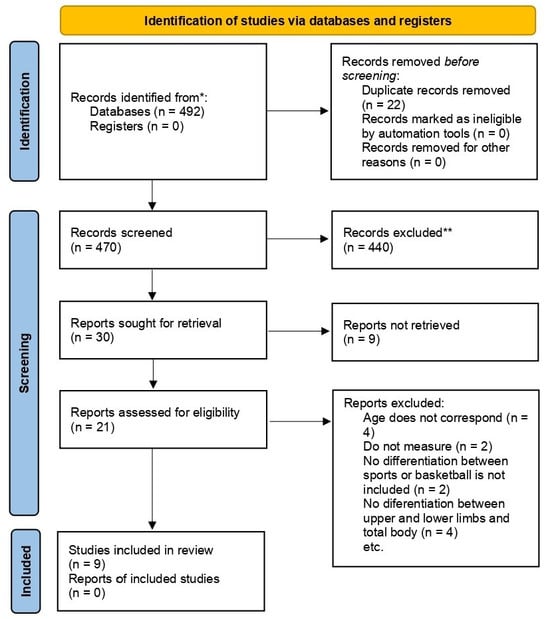One of the studies included in this section was conducted with girls, which revealed some differences in the results, as girls exhibited lower BMD than studies involving male teams [15]. A recent statement from the International Osteoporosis Foundation suggests that girls have a lower rate of bone accrual than boys, and this difference is even more pronounced at the onset of puberty [6]. The differences observed between sexes across different limbs can be attributed to various reasons. For the upper limbs, it is possible that, under normal conditions, boys have more muscle mass than girls, as is also the case for the lower limbs, resulting in girls being slower than boys. In the case of a study included in our meta-analysis conducted on girls [15], these girls have not yet reached the age at which bone mineralization typically increases, which is usually between 11 and 15 years of age [46]. Additionally, analyzing their body weights, it is possible that they do not have sufficient weight to impose tension on the skeletal system that would stimulate BMD accumulation. Research indicates that men typically weigh more than girls, and therefore, their impact may have a greater effect on their BMD [13]. According to a study, boys have larger and stronger bone and joint surfaces and more bone at muscle attachment sites, while females have stronger pelvises due to their ability to carry a child and experience childbirth [47]. Additionally, differences in testosterone and estrogen levels contribute to the discrepancy in bone mass between boys and girls, with testosterone promoting bone size in boys and estrogen reducing bone growth while regulating bone mineral levels in girls [15,48]. Moreover, these hormonal differences not only influence bone size and mineralization but also affect bone geometry and strength [49]. In boys, the anabolic effects of testosterone promote greater cortical bone thickness and a higher bone strength index by enhancing periosteal apposition [50]. In contrast, estrogen in girls stimulates endosteal bone formation while limiting excessive periosteal expansion, leading to a more compact but narrower bone structure [50]. These sex-specific differences contribute to variations in fracture risk, with boys typically experiencing more trauma-related fractures during adolescence, whereas girls face a higher risk of osteoporosis and fragility fractures later in life due to declining estrogen levels after menopause [51]. A study found that female adolescents accumulated spinal bone mineral more rapidly than boys, but longitudinal studies did not find gender differences in bone mass development. However, another study reported that boys had higher femoral bone mass, while girls had higher spinal bone mass, which could be attributed to a higher number of boys compared to girls in the study [49].
Source link
Cristina Castro-Collado www.mdpi.com

